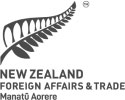Weekly Global Report:
On this page
Feedback
We welcome feedback from New Zealand exporters on this report and invite requests for reporting from New Zealand’s network of Embassies and High Commissions. If you would like to be added to the weekly distribution list for this report, please also email us at exports@mfat.net.
Domestic Update
- At 11:59 pm on Sunday 14 February, Auckland moved to Alert Level 3 for a period of three days and the rest of New Zealand to Alert Level 2, in response to the identification of three COVID-19 community cases in Auckland. At 11.59pm on Wednesday 17 February, Auckland dropped to Alert Level 2 and the rest of New Zealand to Alert Level 1. Cabinet will review the alert levels again on Monday 22 February. Mask use on public transport will continue to be mandatory until further notice.
- Businesses can find out more information on how COVID-19 affects them on business.govt.nz(external link).
- Officials continue to work towards the establishment of a Safe Travel Zone with Australia. Since 21 January, passengers from the Cook Islands have resumed quarantine-free entry into New Zealand and work is progressing towards full two-way quarantine-free travel. Similarly, officials are working to commence one-way quarantine-free travel from Niue to New Zealand as an interim step towards two-way quarantine-free travel.
Global & Multilateral Update
- On 15 February 2021, World Trade Organisation (WTO) members appointed Dr Ngozi Okonjo-Iweala as the next WTO Director General. Dr Ngozi will commence her term on 1 March 2021, which runs until end of August 2025. Dr Ngozi is a former Nigerian Finance Minister, and has extensive international governance experience at the World Bank and as Chair of the GAVI vaccine alliance. She is also the first woman and first African to be appointed to this role.
- Officials are engaging with New Zealand exporters to identify potential implications from the loss of access to US federal government contracts for the specific products impacted by the US intention to reduce coverage of products under the WTO Government Procurement Agreement (GPA).
Regional updates
The Pacific Islands
- Samoa’s COVID-19 State of Emergency (SOE) orders have been extended to March 14 (originally set to expire last Sunday 14 February).
Asia
- The Philippines’ GDP shrank by 9.5% in 2020, the first economic contraction in more than two decades and the worst contraction since records began in 1946. According to Statistics New Zealand data, the Philippines (-16.6%) and Thailand (-3.9%) were the only two major New Zealand goods export destinations in the wider East Asia Region (South East Asia, Japan, South Korea) to experience a decline in goods exports last year. Edible products of animal origin (predominantly dairy products), which represents over 75% of all exports, saw an almost 12% decline, with an over 21% reduction in butter exports being of particular note. Wood and wood products, nearly 7% of all exports, reduced by over 26%. Meat (predominantly frozen beef) and casein dairy protein exports, each approximately 3% of all exports, bucked the trend with 3% and 16% increases respectively.
- The Philippine retail and foodservice sectors - major channels for New Zealand food and beverage exports – struggled in 2020 following prolonged periods of lockdown, low levels of household spending due to a rise in unemployment, and a decline in overseas foreign worker remittances. Nevertheless, economic analysts say that consumer spending is forecast to improve in 2021 with recovering remittance flows, improving household sentiment and the government’s reluctance to return to a strict lockdown.
Europe
- France’s Customs Authority said its goods trade deficit worsened in 2020 to €65.2 billion (an increase of 12.6% from 2019). Key French exporting industries have been particularly hard hit by the COVID-19 pandemic (aeronautical -45% in 2020 year-on-year, cars -19%), resulting in French goods exports decreasing more significantly (-15.9%) than imports (-13%). Although the French agrifood sector was relatively spared from the worst impacts of the pandemic, imports of food products are further closing the gap on French exports, with France’s agrifood trade balance remaining barely positive in 2020 (€1.4 billion, down 22% from last year).
- These trends are reflected in New Zeland’s bilateral goods trade. Statistics from Statistics NZ show New Zealand’s deficit with France having almost halved in 2020 to NZ$449 million (-44.6% on 2019).
Americas
- The US State of Hawaii has expanded its pre-travel testing program to include South Korea. The program enables those travelling from South Korea to bypass Hawai’i’s ten day quarantine obligation.
- According to preliminary estimates from the National Statistics Institute (INEGI), Mexico's real GDP fell by 8.5% in 2020. This was the steepest annual decline since 1932. The estimates show the industrial sector declining the most in 2020, falling by 10.2% year on year. Services had a 7.9% decline (services account for a larger share of the economy). The agriculture sector, however, expanded by 2%. The Economist Intelligence Unit (EIU) estimates a real GDP growth rate forecast of 3.5% in 2021. However, the EIU estimates that recovery in domestic demand will be gradual—largely because the government's policy to not provide support measures to the private sector remains unchanged.
- Amidst a context of rising inflation, Argentina’s government has raised the possibility of increased export taxes and quotas for agriculture, during a discussion with the farming industry over allegations of farmers selling goods in the domestic market for the same prices at which it exports. President Alberto Fernandez held a meeting with agribusiness representatives on 10 February to consider the sector's proposals to settle the dispute. As a result of the meeting the Government agreed to conduct a review to determine the costs and impacts of the various production chains on the final price of foodstuffs.
- Unexpected heavy rainfall in January damaged 50% of fruit production in central Chile, mainly export grapes, peaches, and plums. This is likely to have a significant negative impact on fruit exports for late January and February, with produce redirected to the domestic market.
- The Chilean cherry industry is experiencing lower demand and prices in the Chinese market following allegations of COVID-19 being discovered on packaging, which has negatively affected sales during the Chinese New Year period (contrary to exporters’ expectations of increased consumption). Some companies are now looking to diversify to reduce their dependence on the Chinese market. Exporters are preparing campaigns to increase consumption of Chilean cherries in the United States, South Korea, India, Vietnam, Thailand, and South Korea.
Market reports released this week
- The previous global economic and trade update can be found here.
External links
The following links may provide useful information to businesses:
- NZTE(external link) has a website focused on providing COVID-19 information for exporters. They’ve also launched myNZTE(external link), an interactive digital portal of insights and tools available to all New Zealand exporters.
- The Treasury releases a weekly economic update(external link) every Friday. Stats NZ has published a data portal(external link) with near real-time economic indicators.
- MBIE publishes a sector reports series(external link) which provides regularly updated reports on all industry sectors that make up the New Zealand economy. These include official economic data and the challenges and opportunities that face New Zealand’s industry sectors.
- Business.govt.nz(external link) provides tools and advice from across government to save small businesses’ time and help make the business a success.
- MFAT has created a tariff finder(external link) which is designed to help goods exporters and importers maximise benefits from New Zealand’s Free Trade Agreements and compare tariffs in 136 other markets.
More reports
View full list of market reports
If you would like to request a topic for reporting please email exports@mfat.net
To contact our Export Helpdesk
- Email: exports@mfat.net
- Phone: 0800 824 605
- Visit Tradebarriers.govt.nz(external link)
Disclaimer
This information released in this report aligns with the provisions of the Official Information Act 1982. The opinions and analysis expressed in this report are the author’s own and do not necessarily reflect the views or official policy position of the New Zealand Government. The Ministry of Foreign Affairs and Trade and the New Zealand Government take no responsibility for the accuracy of this report.

